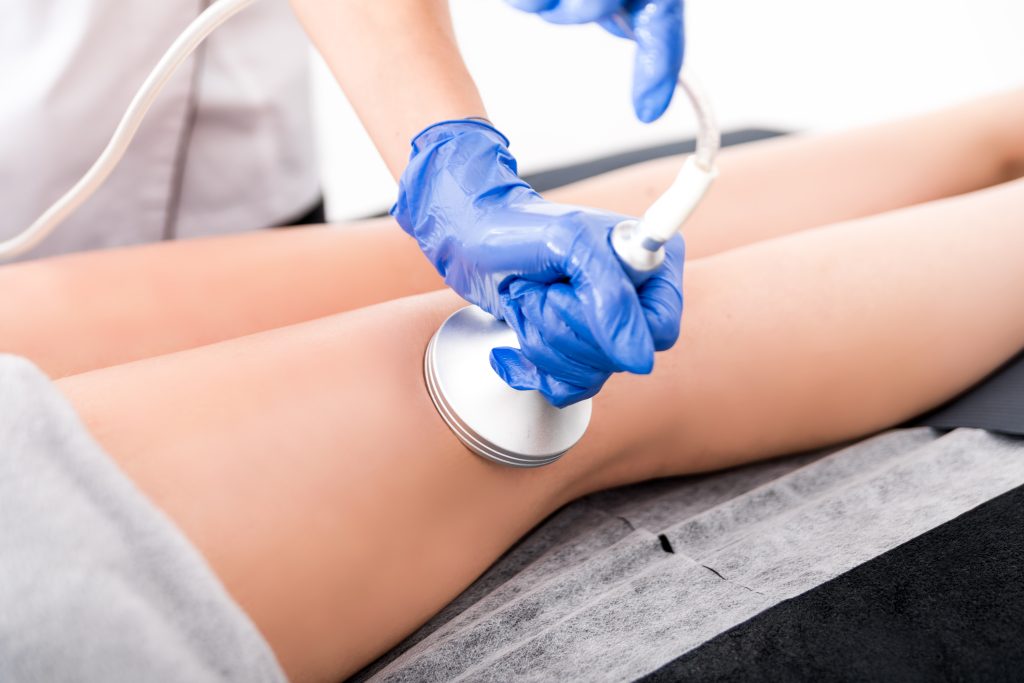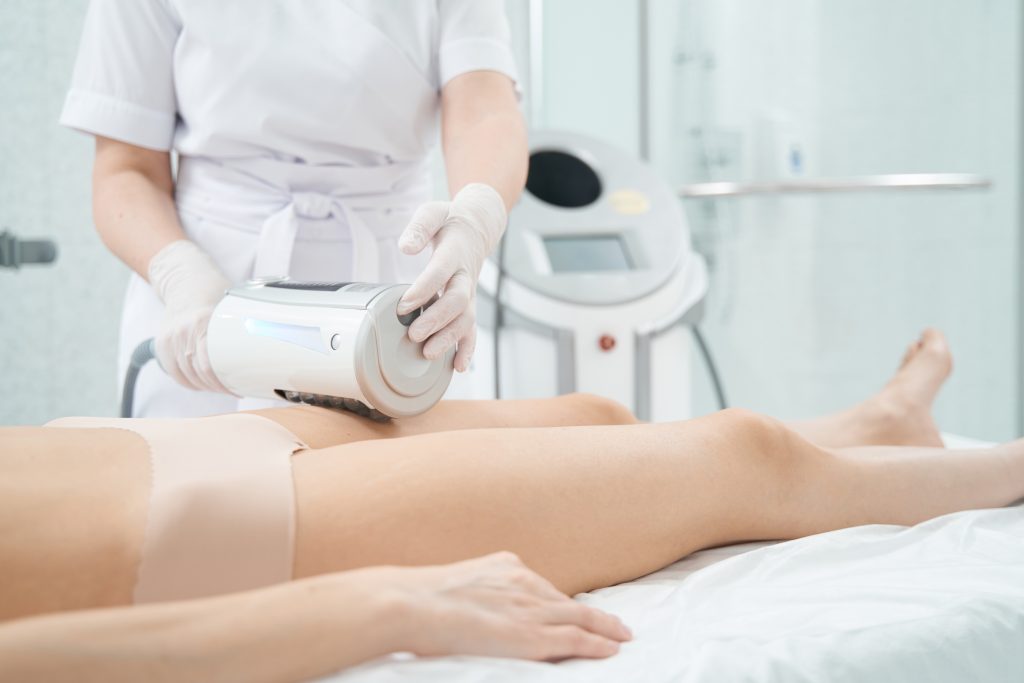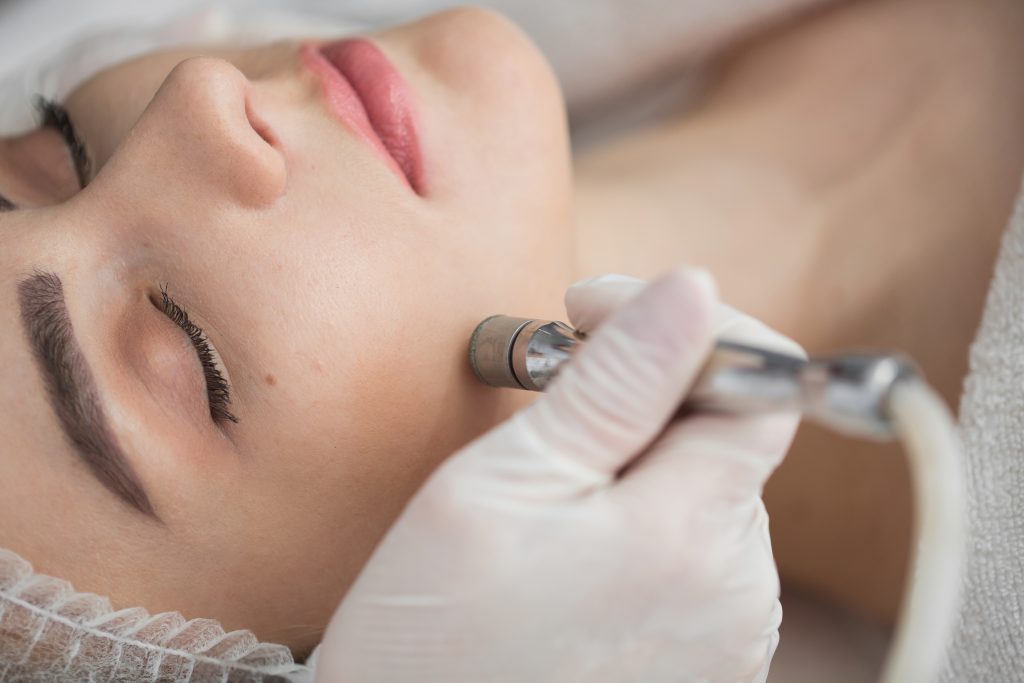What is cellulite?
Cellulite refers to the development of bumps and depressions on the skin.
Cellulite is often referred to by various names including orange-peel skin, cottage-cheese skin, hail damage, and the mattress phenomenon.
Cellulite can impact individuals of both genders, although it tends to be more prevalent among women because of variations in the distribution of fat, muscle, and connective tissue in their bodies.
At some stage in their lives, a significant proportion of women, ranging from 80 to 90 percent, might encounter cellulite.

What causes cellulite?
Cellulite occurs when fat accumulates beneath the skin, with certain women being more prone to it than others. The visibility and quantity of cellulite can be influenced by factors such as genetics, body fat percentage, and age. Additionally, the thickness of one’s skin plays a role in the appearance of cellulite. Cellulite can affect individuals of all body shapes and sizes.
In women, it is easier to see how fat is distributed compared to men. The collagen fibers found between the skin and muscles divide the fat into various pockets. As one grows older and their skin becomes thinner and less elastic, cellulite can become more noticeable. This reveals the dimpled connective tissues beneath.
Cellulite may be caused by:
- hormones
- poor diet
- an unhealthy lifestyle
- accumulated toxins
- genetics
- weight gain
- inactivity
- pregnancy
How do cellulite and lipedema differ from each other?
Lipedema is a condition characterized by the buildup of excess fat in the lower body, particularly in the buttocks, thighs, and calves. Occasionally, the upper arms may also be affected, but it does not impact the hands or feet.
Lipedema leads to increased sensitivity in the skin. Individuals with lipedema may experience pain, swelling, a cold sensation, or easy bruising. Additionally, the texture of the skin often undergoes changes, resembling the appearance of cottage cheese, oatmeal, or an orange peel. As the condition progresses, it may also impact the person’s mobility and ability to walk.
Cellulite is a purely cosmetic issue that typically occurs in the abdomen, buttocks, and thighs. Its appearance is often likened to cottage cheese, oatmeal, or the texture of an orange peel. While it may cause embarrassment, cellulite does not cause physical pain.
Cellulite Treatment

Scientific research has not yet confirmed any of the suggested therapies for eliminating cellulite.
The AAD has examined various methods that could potentially be effective in decreasing the visibility of cellulite through the disruption of the connective tissue bands beneath the skin’s surface.
Acoustic wave therapy
This method was created with the aim of decreasing cellulite. Its functionality involves the vibration of the connective tissue in body areas that are prone to cellulite. This process helps to stimulate and enhance the production of collagen, thereby enhancing the look, feel, and flexibility of the skin.
In order to observe outcomes, multiple treatments are required.
Laser treatments
Also referred to as radiofrequency systems, they offer potential for treating cellulite. Typically, the treatment combines massage, liposuction, or light therapy. It has the ability to dissolve fat, loosen puckering by cutting connective tissue, stimulate collagen production and tighten the skin, improve blood circulation, and reduce fluid retention. Anticipate the effects to persist for a minimum of 6 months.
Cellulaze, a widely accepted laser treatment authorized by the FDA, involves the injection of a numbing solution and the placement of a laser just beneath the skin. The laser emits heat in three directions, leading to an approximate 75% reduction in cellulite that can last for approximately one year.
Vacuum-assisted precise tissue release
The process involves using a tool with tiny blades to separate the tight connective tissues beneath the skin. By cutting these bands, the tissue can then be lifted, filling in the appearance of the uneven skin.
Results may last up to three years.

Carboxytherapy
In this medical procedure, a gas called carbon dioxide (CO2) is injected just below the skin. It is important to note that CO2 is distinct from carbon monoxide, which can be fatal. Potential adverse effects of carboxytherapy include slight discomfort during the treatment and temporary bruising.
Initial research indicates that women might experience reduced visibility of cellulite. As part of a particular study, 10 women were subjected to 8 treatment sessions. Subsequently, the researchers observed a slight decrease in the presence of cellulite among the women.
Microdermabrasion

This technique involves the usage of either aluminum oxide or salt crystals to cleanse the skin. These minuscule particles delicately remove dead skin cells and prompt the growth of new skin cells. It is important to undergo multiple sessions for effective results.
Subcision
This procedure, which is not very intrusive, can enhance the appearance of your cellulite. The effects of this treatment have been proven to last for a minimum of 2 years. The physician first identifies the targeted area, administers a numbing solution, and then employs a small blade to sever the connective tissue that attaches the fat to the dimples.
In 2015, the Cellfina device was given the go-ahead in order to improve the accuracy of this procedure. By using vacuum assistance, it allows for better control over the depth and area that is being treated. Typically, around 20 to 30 cellulite dimples are targeted during a one-hour session. The effects of the treatment can last for up to two years.
What can’t I eat if I have cellulite?
If you have cellulite, you are free to eat whatever you please, but having unhealthy eating habits can raise the chances of developing cellulite. Consuming a diet that is high in calories and includes ample amounts of carbohydrates, fats, preservatives, and salt might encourage the growth of additional cellulite.
How soon after treatment will I start to see results?
It is crucial to keep in mind that every individual’s body is different. The outcome you achieve will be influenced by the treatments that you and your healthcare professional determine to be the most suitable. As an illustration,
- The treatment with acoustic wave therapy may take six weeks, and its effects can last from two to six months.
- Results from subcision treatment can be seen within just one month following the initial treatment.
- Noticeable results from using retinol creams can only be observed after a minimum of six months of consistent application.
- It could take a minimum of two to three months to see results from exercising.
Having cellulite in Turkey?
The patient must carefully search for an appropriate service provider, have information, and ask about the surgeon and his experience. And also, checking examples of his previous operations.
Accordingly, we encourage you to contact the Health & Beauty to obtain all information and details, and to ensure that you have your operation done by the hands of the most skilled doctors working in this specialty.

